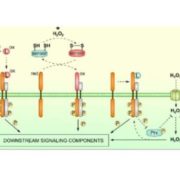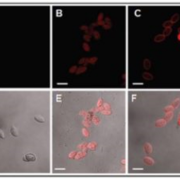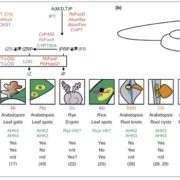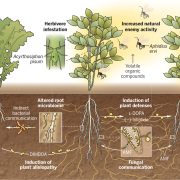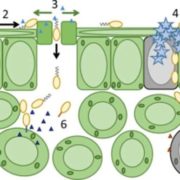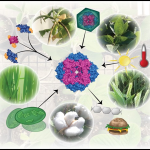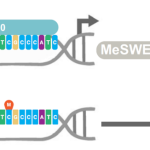Weeding the witchweed by changing strigolactone biosynthesis in maize
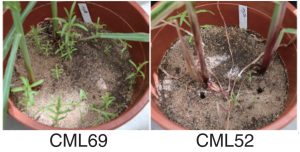 Striga, commonly known as witchweed, compromises the yield of maize (Zea mays) especially in Africa. The seeds of Striga species remain dormant in the soil and are stimulated to germinate by a class of hormones called strigolactones (SL) exuded by the maize roots. Strigolactones are plant hormones with developmental roles and that serve as host signals for beneficial fungi. Plants exude a mix of SLs, and the composition of the exudate differs across species and within species as well. Here, Li et al. investigated natural variation in the mixture of SLs, identified three additional SLs, and uncovered the entire biosynthetic route for SLs in maize. Different SL blends in different genotypes affect Striga germination and infection. The authors discovered that there are two parallel pathways that operate for SL biosynthesis and produce the major SL, zealactone. Changes in flux through these routes can alter the maize SL profile by changing the ratio of zealactol and zealoactone plus zealactonic acid. Maize genotypes that released more zealactol and zealactonic acid than zealactone promote less Striga germination and infection, thereby imparting resistance against it. This research offers promise for breeding Striga resistant maize by adjusting the combination of SL mix. (Summary by Arpita Yadav@arpita_yadav_ ). Science 10.1126/science.abq4775
Striga, commonly known as witchweed, compromises the yield of maize (Zea mays) especially in Africa. The seeds of Striga species remain dormant in the soil and are stimulated to germinate by a class of hormones called strigolactones (SL) exuded by the maize roots. Strigolactones are plant hormones with developmental roles and that serve as host signals for beneficial fungi. Plants exude a mix of SLs, and the composition of the exudate differs across species and within species as well. Here, Li et al. investigated natural variation in the mixture of SLs, identified three additional SLs, and uncovered the entire biosynthetic route for SLs in maize. Different SL blends in different genotypes affect Striga germination and infection. The authors discovered that there are two parallel pathways that operate for SL biosynthesis and produce the major SL, zealactone. Changes in flux through these routes can alter the maize SL profile by changing the ratio of zealactol and zealoactone plus zealactonic acid. Maize genotypes that released more zealactol and zealactonic acid than zealactone promote less Striga germination and infection, thereby imparting resistance against it. This research offers promise for breeding Striga resistant maize by adjusting the combination of SL mix. (Summary by Arpita Yadav@arpita_yadav_ ). Science 10.1126/science.abq4775


